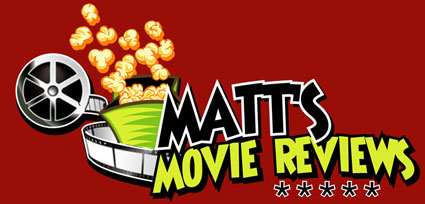With a passionate zeal and the budget to back it, Mel Gibson has created a religious epic which is equally unique, inspirational, and repellent in The Passion of the Christ.
With the script drawn from several sources (most notably the Gnostic Gospels of the New Testament) and all of the films dialogue in ancient Aramaic, Latin, and Hebrew, Gibson has put together a film which upholds the vigour of his faith in every frame.
The Passion of the Christ focuses on the last 12 hours in the life of Jesus Christ (Jim Caviezel), where he was betrayed by his apostle Judas (Luca Lionello), persecuted by the elders of the Jewish temple who viewed him as a blasphemer and false messiah, and brutally punished by the Romans. Along the way, Christ must resist the temptation of salvation by the hands of Satan (Rosalinda Celentano.)
Brief interludes show glimpses of a charming, charismatic and sweet natured man destined for great things, and is a breather from the violence as the viewer witnesses Christ being taunted, spat on, punched, scourged to a bloody pulp, and then crucified.
The most brutal portrayal of Roman punishment thus far seen on film, the scourging scene has to be one of the most savage and bloody sequences in motion picture history: these are not your average love taps seen in most films based on Jesus’ life and death, with the combination of great make up and sound effects (along with Jim Caviezel’s realistic reactions) effectively portraying the pain and anguish Christ went through. Yet one can’t help but feel that Gibson over steps his bounds.
His approach to violence is understandable. With Quentin Tarantino cutting off ears in Reservoir Dogs, Martin Scorsese popping eyeballs out of their sockets in Casino, and Steven Spielberg laying waste to a battalion with ferocious intensity in Saving Private Ryan, Gibson must match the over abundance of movie violence to effectively move his audience. Yet in doing so he over steps his intentions of showing how Christ died for our sins, leaning more towards shock and awe, rather then awe inspiring.
Another controversial point is the accusations of anti-Semitism thrown towards the film which are baseless and a senseless over reaction. It is an odd accusation, as it is clear that both the accusers and the accused (namely Jesus) are Jewish. Perhaps it had more to do with the Holocaust denial ramblings of Gibson’s father, or that it is very rare to have the Jewish people portrayed as instigators rather than purely as victims within popular culture, that warranted such a reaction from the majority of the Jewish community.
However, regardless of what underlying motives said community had towards Gibson and his faith, The Passion of the Christ is no more anti-Semitic than it is a snapshot of Roman occupation in Jerusalem during a time of ultra religious sensitivities which caused Jesus to be punished.
The cinematography by Caleb Deschanel is exquisite, from the blue moonlight fog of the films opening scenes to the Stations of the Cross sequence, where he and Gibson drew inspiration from the works of Caravaggio. The set design is magnificent, as the films Italian locales are impressively transformed into Roman occupied Jerusalem, and composer John Debney provides a moody and atmospheric score.
The acting on hand is exceptional. Jim Caviezel magnificently portrays Christ, displaying a strong wisdom and the keen physical prowess needed to tackle the films extensive physical demands, and Romanian actress Maia Morgensten gives a heart wrenching portrayal of Mother Mary. In a piece of excellent stunt casting, Italian model/actress Rosalinda Celentano is effectively creepy as the Devil, which brings us to an oft overlooked fact that - thanks to its copious blood letting and various supernatural themes - The Passion of the Christ is indeed an genuinely effective horror film.
Not your average Good Friday afternoon movie, The Passion of the Christ is an unsettling and overwhelming film experience that none are likely to forget. |
